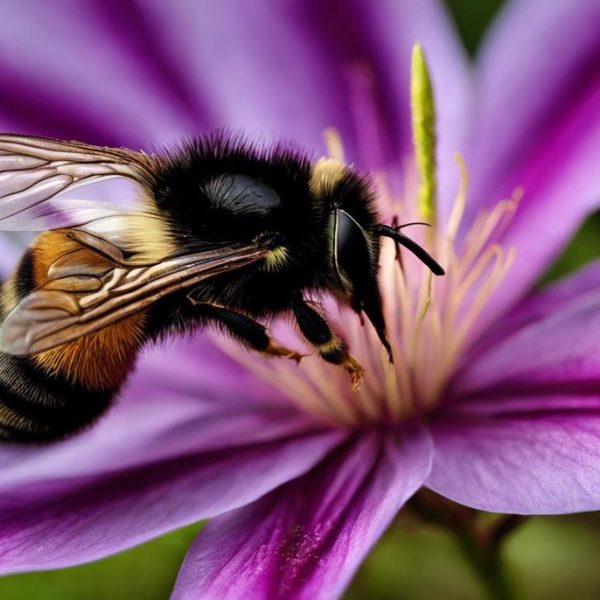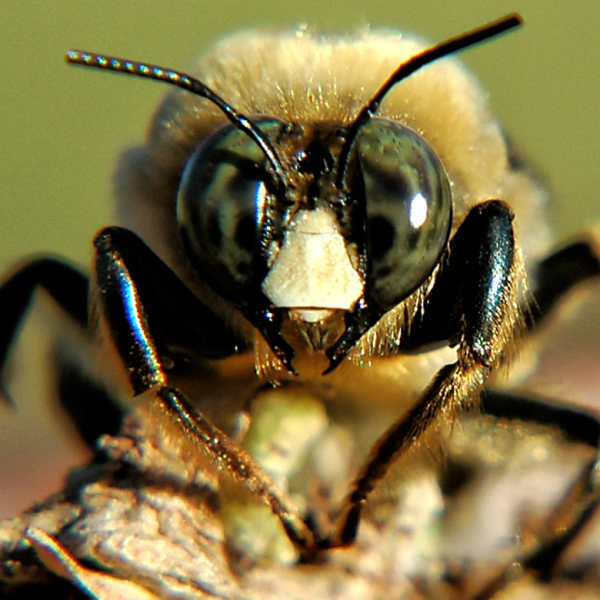The enchanting display of knockout roses within a garden not only adds a vibrant splash of color but also brings a vital conversation to the foreground—how do these popular ornamental plants interact with essential pollinators, specifically bees? Knockout roses, esteemed for their hardiness and continuous blooms, have a complex relationship with these industrious insects. While we marvel at their beauty, it’s imperative to delve into attributes such as color, scent, and the availability of nectar and pollen, which may either beckon or dissuade our winged friends. An understanding of this symbiosis is crucial in fostering a garden space that not only thrills human admirers but simultaneously serves as a sanctuary for bees. As we turn to the canvas of our gardens, each stroke—a choice in planting and maintenance—can either support or hinder the fragile link between knockout roses and their pollinating companions.
Knockout Roses and Pollinators
Knockout roses are a popular choice for gardeners looking to add a splash of color to their flower beds. With their reputation for being low-maintenance and disease-resistant, these vibrant blooms have become a staple in many landscapes. However, when it comes to attracting bees and supporting local ecosystems, are knockout roses the best choice?
When imagining a flourishing garden, pollinators like bees play a vital role, but not all flowers are created equal in their eyes. Although knockout roses are sure to catch the eye of any passerby with their bold and continuous blossoms, they aren’t known for being a top attractant for bees. The reason lies in their breeding; knockout roses have been developed to maximize aesthetics and hardiness, which often leads to a trade-off with wildlife benefits. The tightly-packed petals of most knockout rose varieties can make it difficult for bees to access the pollen and nectar, which are the real attractions for these industrious insects.
For those eager to see bees buzzing in their gardens, considering alternatives to knockout roses can make all the difference. Planting native wildflowers, lavender, or flowering herbs not only adds variety but these plants are often more in tune with the needs of local bee populations. These alternatives offer more accessible pollen and nectar sources for bees, which in turn help support their colonies and the wider ecosystem. So, while knockout roses have their appeal and place in certain garden designs, gardeners aiming to make their space a bee-friendly haven may want to branch out with their plant selections.

Planting for Pollinators
To transform knockout roses into beacons for bees, it’s all about location and care.
Plant knockout roses in an area that gets full sun because the more sunlight these vibrant blooms receive, the more irresistible they become to bees.
Sunlight boosts floral production and the sweet nectar that bees crave.
Also, consider spacing—roses should be planted about 3 feet apart.
This spacing promotes healthy air circulation, but it also gives bees plenty of room to buzz from bloom to bloom without hindrance, optimizing their foraging routes and ensuring each flower gets a visitor.
While knockout roses aren’t nectar-rich like some other bee magnets, their colorful petals can still draw in these pollinators.
However, the real trick lies in consistency and avoiding pesticides.
Bees thrive in environments that are free of chemicals, so opt for organic means to take care of any pests or diseases.
Complement knockout roses with a selection of nearby plants that offer what the roses lack, like shallow nectar stores and open blooms.
Try intermingling with plants that have different blooming periods to maintain a steady buffet for the bees.
Think perennials or annuals that flower at varied times, offering sustenance throughout the seasons.
Remember, while knockout roses may not be the bee utopia gardeners once thought, with the right companions and a bee-friendly approach, these roses can play part in a symphony of blossoms that together create a haven for our buzzing friends.
Plant thoughtfully, care tenderly, and watch the bees dance from petal to petal, sustaining the cycle of growth in your garden.

Impact of Pesticides on Bees
Pesticides, those necessary yet tricky substances that help keep our gardens flourishing, can unfortunately spell trouble for the beneficial bees we strive to attract. Particularly in gardens abounding with knockout roses, understanding the impact of pesticides is critical. These chemicals, while warding off unwanted pests, don’t discriminate, and can be harmful to the very pollinators that aid in the health and beauty of our blooms. Bees, being the industrious creatures they are, can be seriously affected by even low levels of pesticides as they go about collecting nectar and pollen.
Knockout roses, although easier to care for than their fussy cousins, are sometimes treated with pesticides to manage pests that are not deterred by the rose’s disease-resistant nature. However, when bees come into contact with these treated blossoms, it can impair their navigation, foraging behavior, and even their ability to reproduce. The situation gets grimmer—a buildup of pesticide exposure can contribute to Colony Collapse Disorder, which devastates bee populations and, in turn, our broader ecosystem. Remember, healthy bees are synonymous with a thriving garden.
Don’t let this information dampen the joy of gardening! Instead, use it as fuel to adopt more bee-friendly practices. By critically assessing the need for pesticides and seeking out organic or less harmful alternatives, gardeners can make a real difference. Prevention, such as choosing the right plants that are less prone to pests, can also reduce the need for chemical interventions. Employ mechanical pest control methods or pick off pests by hand when possible. Introduce beneficial insects, like ladybugs and lacewings, to give Nature a chance to balance itself. It’s the small, consistent actions that build up to create a bloom-filled garden where knockout roses and bees can not only coexist, but flourish together.

Seasonal Care for Knockout Roses
When talking about seasonal care for knockout roses, it’s often overlooked how such care can profoundly influence the buzzing visitors that play a crucial role in our ecosystem—the bees.
Addressing seasonal challenges is not just about keeping roses blooming beautifully; it’s also about ensuring they remain sanctuaries for our pollinator pals.
As the seasons change, so do the needs of knockout roses and bees. During springtime, it’s vital to prune knockout roses for shape and health. This pruning promotes new growth which means more flowers for bees to visit. However, avoid over-pruning as bees rely on the blooms for sustenance.
Transitioning into summer, the focus is on adequate watering. Knockout roses need more water to withstand the heat, but the timing of waterings is essential. Water early to give bees the rest of the day to forage unhindered by wet conditions, which can be harmful to them. Mulching helps retain moisture and also aids in regulating soil temperature and suppressing weeds; however, steer clear of chemically treated mulches that might be toxic to bees.
As autumn rolls in, it’s time to prep for the cold. While knockout roses are hardy, providing them with proper support ensures they survive the winter, ready for bees come spring. This might include protective mulch and tying up canes to prevent winter damage. It’s during this season that bees are preparing for colder months, so a late bloom can be a critical food source. Fall is also an ideal time to skip deadheading the roses. Allowing roses to form hips offers an additional food source for birds and can be an unexpected reserve for bees when other food sources are scarce.
This holistic approach to seasonal care creates an equilibrium where knockout roses flourish year-round and bees receive a continuous source of nutrition. It’s a win-win for the garden enthusiast who takes immense satisfaction in a vibrant, sustainable garden that buzzes with life, thanks to the smallest of winged visitors. By respecting the interdependence of roses and bees through each season, a garden is no longer just a showcase of human horticultural achievements but a thriving component of the local environment. Let’s not forget that these small actions contribute to the preservation of bee populations, and what’s a garden without its hardest workers?

The dance between the vibrant blooms of knockout roses and the bees that alight upon them is a subtle yet crucial aspect of our gardens’ ecology. With mindful gardening practices, we can create a flourishing haven that echoes with the gentle hum of bees, enriching our environment and ensuring the vitality of these vital pollinators. By being judicious with our use of pesticides, thoughtful in our seasonal care, and intentional with our planting strategies, we can foster a garden that is not just a feast for the eyes but a bountiful refuge for bees as well. The beauty of knockout roses can be fully realized when we acknowledge and respect the role these flowers—and the gardeners who tend them—play in the greater ballet of nature’s intricate interdependencies.


